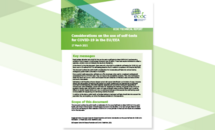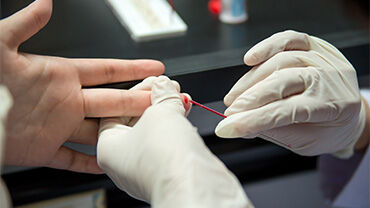Considerations on the use of self-tests for COVID-19 in the EU/EEA
This document outlines the public health considerations for the use of self-tests to detect SARS-CoV-2 by public health authorities in the European Union/European Economic Area (EU/EEA). Only rapid antigen detection tests (RADTs) for self-testing for direct detection of SARS-CoV-2 virus particles in infectious individuals are considered within this document.
Executive Summary
Rapid antigen detection tests (RADTs) that can be used as self-tests to detect SARS-CoV-2 are becoming available in the European Union/European Economic Area (EU/EEA). These tests require individuals to collect a specimen, conduct a test and interpret the results by themselves.
At the time of writing this document, there were only a few RADTs available for self-testing for COVID-19, and there was no CE-marked RADT for self-testing placed on the EU market in compliance with Directive 98/79/EC.
This document outlines the public health considerations for incorporating self-tests into national testing strategies by public health authorities in the EU/EEA.
From a public health perspective, self-tests can offer advantages when used to complement professionally administered RADTs or RT-PCR tests. They can improve the accessibility to testing. They allow individuals to obtain the result very quickly, which could support the early detection of infectious cases and reduce further community transmission.
Self-testing could therefore enhance disease control with prompt identification and isolation of cases. However, shifting the responsibility of reporting test results from health professionals and laboratories to individuals could lead to underreporting, and make response measures such as contract tracing and quarantine of contacts even more challenging. Current indicators for monitoring the intensity and spread of the COVID-19 pandemic (testing rates, test positivity rates, and case notification rates) could be affected, and it could be difficult to monitor disease trends over time. An additional challenge is that samples from self-testing would not be available for sequencing and monitoring variants of concern.
In addition to the above, public health authorities looking to implement self-tests should take into account the population they are targeting, as well as the disease prevalence in that population.
Download

Erratum 26 April 2021: The following sentence was deleted ‘there was no CE-marked RADT self-test placed on the EU market in compliance with Directive 98/79/EC’ from page 1 and 3 and replaced with text that more accurately reflects the situation.







